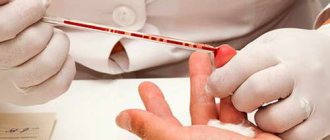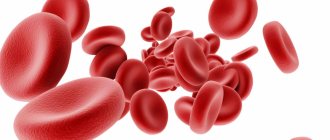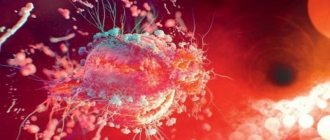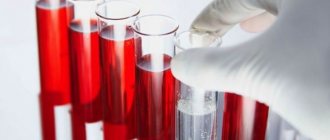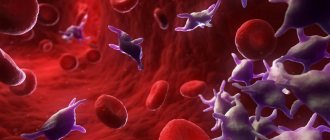In a healthy state, the body produces the substance during the processing of proteins and removes it through the gastrointestinal tract and kidneys. Uric acid can be elevated if there is a failure in its elimination or if it is over-produced by the liver.
An analysis for the determination of uric acid in the blood is important in the diagnosis of kidney diseases, gout, arthrosis and arthritis, since over time it transforms into crystals that accumulate in the joints, kidneys, gastrointestinal tract, heart and eye chambers.
What is urate, and how is it different from uric acid?
During the breakdown of purines in the liver, crystals are formed consisting of oxygen and carbon, nitrogen and hydrogen, that is, uric acid. It is excreted from the human body by the kidneys. Certain foods contain purines, including legumes, liver, beer and anchovies. This compound is found in small quantities in urine, blood, sweat, liver and brain tissue. The sodium and potassium salts of uric acid that form sediment in the urine are called urates. They are synthesized from this compound. Uric acid levels are tested in two ways: in urine and in blood. In the first case, a urine test is performed, in the second, a biochemical blood test is performed.
The presence of an acceptable dose of this substance does not pose any harm to the human body; on the contrary, it is involved in a number of important physiological functions:
- It increases the degree of influence of catecholamines on the cells of the body’s tissues, stimulating the functioning of the brain and various parts of the nervous system.
- Prevents the degree of negative effects of radicals on the body.
- Performs control over the qualitative composition of body cells.
Are there benefits to elevated uric acid levels?
Many are surprised by the fact that some researchers are convinced that a high level of purine metabolic product in the blood has a positive effect on the body and makes it possible to correct certain pathological conditions:
- Back in the 1960s and 1970s, numerous studies were conducted and it was proven that patients with acute hyperuricemia have a higher level of intelligence and reaction acuity. This is explained by the fact that uric acid is similar in chemical structure to trimethylated xanthine caffeine. Therefore, researchers believe, it influences increased performance.
- Higher-than-average acid levels have been shown to prolong life while acting as an antioxidant that inhibits superoxide and peroxynitrite, iron-catalyzed oxidative reactions. Increased antioxidant activity and activation of endothelial function occurs as a result of uric acid transfusion.
- This compound is a powerful neuroprotector, inhibitor of neuroinflammation and neurodegeneration. It also significantly reduces the risk of Alzheimer's and Parkinson's diseases.
It should be noted that a characteristic effect occurs with a sharp increase in acid in the blood. Chronic hyperuricemia has other consequences: endothelial dysfunction and the development of the oxidative process.
Along with the positive effect of raising the level of uric acid in the blood, its high level is a serious signal about a number of diseases. It is necessary to immediately conduct a series of studies that will help establish the causes and cancel them. Uric acid in excess is a poison that poisons the body from the inside.
Level of uric acid in the blood
UA is the abbreviation for uric acid on the biochemical blood test form, and the indicators themselves are measured in a unit - µmol per liter (µmol/l).
The level of uric acid in the blood in women is 160–440 µmol/l, in men 240–500 µmol/l, in children 120–400 µmol/l.
Normal for women
Depending on the age of the woman being examined, normal values may vary. Still, the difference is not so great if we consider the range of a small period of time. It is based on 3 main periods.
| Age (years) | Uric acid is normal |
| Up to 16 | 120-350 |
| Up to 60 | 200-310 |
| Over 60 | 120-470 |
Normal for men
Compared to women, uric acid levels in men are initially higher. The difference ranges from 30 to 90 units, it is due to physiology, hormonal levels, daily activity and other factors. This level is predetermined by nature and biochemical processes.
Specific data, taking into account age, are presented below:
| Age | Normal concentration |
| Up to 16 years old. | 150-350 |
| 17-60 years old. | 250-400 |
| Over 60 years old. | 210-500 |
The data from the research results are analyzed by a specialized specialist. These are mainly endocrinologists, others are also involved, if necessary.
Normal in children
The indicators are also tied to three key moments in children's lives.
| Age | Uric acid levels |
| Up to 1 month | 140-290 |
| Up to a year. | 140-210 |
| 1-16 years old. | 160-500 (adjusted for gender, since for men, the volumes will be approximately 10-20 units larger). |
When determining, it is necessary to take into account temporary hormonal increases. This mainly concerns puberty, which begins at 11-12 years of age.
Normal during pregnancy
The indicators are affected by the trimester and stages of gestation.
| Trimester | Indicators |
| I | 120-250 |
| II | 140-297 |
| III | 185-375 |
When interpreting the analysis, specialists are guided not only by the data received, but also by reference values. The calculation method is taken into account; it can be one or another, depending on the institution that conducted the research. Each doctor considers this issue separately.
Complexes with this research
Advanced anti-aging diagnostics in postmenopause Advanced monitoring of age-related changes during postmenopause RUB 29,230 Composition
Joints RUB 2,620 Composition
Advanced women's anti-aging diagnostics Advanced monitoring of basic blood parameters in women aged 40+ RUB 28,680 Composition
IN OTHER COMPLEXES
- Advanced male anti-aging diagnostics RUB 33,710
- Diabetes monitoring RUB 1,900
- Male anti-aging diagnostics RUB 13,300
- Nutritionist recommends RUB 7,570
- Inflammation of joints 860 ₽
When, where and how should you take a blood test for uric acid levels?
A biochemical blood test will show the level of uric acid. The analysis is carried out for preventive purposes for healthy people, and also patients diagnosed with diseases that predetermine a delay in its removal from the body are examined. Such diseases include: diseases of the cardiovascular system, diabetes, gout, and so on.
The objectivity of the indicators is seriously affected by the patient’s preparation for testing. To get a reliable result, the patient should not eat juices (fruit and vegetable), drinks (alcohol and caffeine), or chewing gum the day before the procedure. In addition, it is recommended to reduce the level of physical and mental stress. Blood is donated on an empty stomach in the morning; food in the evening should be no later than twelve hours before donation. It is prohibited to smoke for at least one hour before taking blood for analysis.
Venous blood from vessels passing in the cubital fossa is suitable for research. The blood taken is examined within 24 hours, and the patient receives the result the next day. If it is necessary to conduct a blood test urgently, then it is carried out within two to three hours.
References
1. Hille R. Structure and Function of Xanthine Oxidoreductase (English) // European Journal of Inorganic Chemistry, 2006. doi:10.1002/ejic.200600087 2. McCarthy DJ, Hollander JL Identification of urate crystals in gouty synovial fluid. // Annals of Internal 7 - 1961. - Vol. 54. - P. 452. 3. Association of General Practitioners (Family Doctors) of the Russian Federation CLINICAL GUIDELINES FOR DIAGNOSIS AND TREATMENT OF GOUT IN GENERAL PRACTICE 2013 4. CLINICAL PROTOCOL FOR DIAGNOSIS AND TREATMENT. GOUT ARTHRITIS. 5. Diagnosis and treatment in rheumatology. Problematic approach. Pyle K., Kennedy L. Translation from English. /Ed. N.A. Shostak, 2011 6. Rheumatology: Clinical guidelines / Ed. Academician RAMS E.L. Nasonova. – 2nd ed., rev. and additional - M.: GEOTAR-Media, 2010. - 752 p. 7. Clinical recommendations. Rheumatology. 2nd edition. Ed. E.L. Nasonova, 2010 8. Rheumatology: national guide/Ed. E.L. Nasonova, V.A. Nasonova. - M.: GEOTAR - Media, 2010 - 711 p.
Causes of increased uric acid
If uric acid is elevated in the blood, a number of diseases may be the cause:
Hypertension
With arterial hypertension of the second stage, the level of uric acid increases. The cause is kidney damage, which leads to aggravation of the underlying disease. During the course of treatment for hypotension, uric acid levels can be normalized without special therapy. If this does not happen, the patient must adhere to a special diet, increase physical activity, and undergo therapy prescribed by a specialist.
Gout
In case of increased uric acid in gout, there is a high amount of formation of purine bases. In cases of gout, the kidneys are the first to be affected, followed by the development of renal failure. The blow is also applied to the joints, but changes in them occur at a slower pace. The level of pathological transformation is commensurate with the level of uric acid: the higher it is, the more the kidneys suffer. But that’s not all, hyperuricemia is the cause of the development and worsening of atherosclerosis, arterial walls are affected. As a result, patients diagnosed with gout are much more susceptible to cardiovascular disease.
Endocrine diseases
The disease hypoparathyroidism is characterized by another negative change - the appearance of a high level of calcium in the blood, which is removed from the bones.
In diabetes mellitus, a large amount of sugar in the blood + hypersular hormones lead to irreversible changes in various types of metabolism. It is possible that even the nuclear material of the cells is destroyed, as a result of which a secondary change in the level of uric acid occurs, and this process no longer depends on the performance of the kidneys.
Excessive synthesis of growth hormone is called acromegaly, this manifests itself in the form of a disproportionate change in body parts - their enlargement. The pathology is characterized by a failure in the metabolism of purine nucleotides and, as a result, uric acid is increased in the blood.
Overweight
Obesity is a companion to hypertension, gout, and diabetes. Medicine knows the stamp of metabolic syndrome, which has recently become a primary problem: excess weight + persistently high blood pressure + diabetes mellitus. Each of these changes in the body contributes to the occurrence and progression of hyperuricemia.
High levels of lipoproteins and cholesterol
Very often, the signal of obvious clinical symptoms of gout and arterial hypertension is preceded by a sudden increase in these two components of the lipid profile. Changes in atherosclerotic arteries affect various vascular areas.
Uric acid is an accelerator of the oxidative reactions of lipoproteins of reduced totality and lipid peroxygenation. In the process, the resulting oxidative stress causes further development of atherosclerosis. In addition, uric acid becomes involved in platelet adhesion and aggregation, increasing the risk of progression of coronary thrombosis.
Stones in the kidneys
Uric acid is a substance that forms stones; its excess amount causes their presence in the kidneys. Insufficient acid production by the kidneys indicates a number of pathologies: renal polycystic disease, kidney failure, acidosis, nephropathy during lead poisoning, as well as an aggravated form of toxicosis in pregnant women.
Blood diseases
In the case of blood diseases, in addition to the breakdown of its components, the process of breakdown of tissue components begins with an increase in the indicator of purine bases. Hyperuricemia is a sign of polycythemia, B12-deficiency anemia, leukemia, congenital and acquired hemolytic anemia.
Asymptomatic course of the disease
Studies prove that every 5th citizen of Belarus and Russia has an increased level of this compound in the blood without clinical pathology. Scientists believe that this condition can be considered an independent risk factor for cardiovascular diseases.
Other pathologies
- Diseases that occur with large tissue decay. An obvious example is burn shock. In case of renal failure, the period of excretion of the metabolic product by the kidneys is prolonged.
- Lesch-Nyhan genetic disease is one of the causes of increased uric acid in the blood. In the presence of such a diagnosis, purine accumulation occurs.
- Down syndrome is a disease with a disorder of purine metabolism.
- Erectile disfunction. An increase in the level of purine metabolism product in the blood six times increases the risk of progression of erectile dysfunction.
Nonspecific factors:
- Use of medications: Furosemide, Aspirin, Phenothiazines, Theophylline, Adrenaline and others.
- Food rich in purine components. It is no secret that gout is called a disease of aristocrats, that is, people who consume excessive amounts of red wine, meat, fish, and offal. All of them contain an excessive amount of purines.
- Drinking alcohol, primarily beer and red wines rich in purines. In addition, alcohol negatively affects the functioning of the kidneys and liver, which also leads to the accumulation of uric acid.
- Constant diets, which cause dysfunction of the excretory process of the kidneys.
- Extensive physical activity is one of the causes of hyperuricemia due to the consumption of increased amounts of protein and its breakdown.
URIC ACID
URIC ACID
- 2,6,8-trioxypurine; in humans it is the end product of purine metabolism. Disturbances in M.'s metabolism cause or accompany diseases such as gout, arthritis, spondylosis, urate and uric acid nephropathies, urolithiasis, obesity, diabetes mellitus, hypertension, etc. Significant amounts of M.'s salts are urates (see. ) are released in diseases associated with increased breakdown of cells and tissues, for example, leukemia. Deposits of uric acid compounds (primarily monosodium urate) in tissues can cause local inflammatory and dystrophic changes in them (see Gout). Disorders of M.'s metabolism are hereditary (primary) and acquired (secondary). Insufficiency of hypoxanthine phosphoribosyltransferase (EC 2.4.2.8) and a number of other enzymes in combination with increased activity of glutathione reductase (EC 1.6.4.2) is the cause of congenital idiopathic familial hyperuricemia caused by increased synthesis of M. To. Hereditary deficiency of the enzyme hypoxanthine: guanine phosphoribosyltransferase is the cause severe neurol, syndrome in children (Lesch-Nyhan syndrome), the development of which is also associated with hyperuricemia due to increased formation of uric acid.
M. can be presented in two forms: lactam, characteristic of free acid, and lactim, which is the result of enolization that occurs during the formation of salts:
Lactam form of urinary acid Lactam form of urinary acid
M. to. was discovered by Scheele (GW Scheele) in 1776 in the composition of urine. M. to. is found in large quantities in the excrement of birds, snakes and in urinary stones. It is a constant component of the urine of mammals and humans, in which it is also found in small quantities in organs, tissues and blood.
Synthetically, M. was obtained by heating urea (see) with trichlorlactic acid amide. The structural formula of M. was finally established by various syntheses, of which the condensation of isodialuric acid with urea and the reaction of 5-nitrouracil in an alkaline solution with sodium dithionite should be noted. The resulting sulfamic acid fuses at 190-200° with urea.
Pure M. K. is a light white powder that crystallizes in the form of microscopic rhombic tablets. In cold water, one part of M. to. dissolves in 39,480 parts of water, in boiling water - one part of M. to. in 1,600 parts of water; M. K. easily dissolves in caustic alkalis, forming with them medium salts as a dibasic acid; M. is insoluble in alcohol and ether. Average salts of calcium and alkali metals are highly soluble in water; acid salts are much less soluble in water. To obtain M. from urine, hydrochloric acid is added to the latter. When M. stands, it precipitates in the form of a crystalline precipitate, colored dark brown. To precipitate M. from solutions, picric acid, phosphotungsten acid, silver salts, cuprous oxide and other precipitants are used. When heated, metallic material becomes charred without melting; its decomposition products are hydrocyanic acid, cyanuric acid, urea and ammonia.
The most common qualitative test for M. is based on its oxidation with nitric acid, this is the so-called. murexide test. When wetting the residue obtained by heating M. with nitric acid with ammonia, a purple color develops, which depends on the formation of purple ammonia salt. A characteristic reaction to M. to. is also its oxidation with copper oxide, which is then reduced to copper oxide. For the quantitative determination of M., it is isolated in the form of ammonium salt and titrated with potassium permanganate. Colorimetric methods for determining M. c. are widely used. In contrast to the products of its breakdown, M. c. is characterized by intense absorption in the UV part of the spectrum with a maximum at 293 nm. This property of M. is also used for its quantitative determination.
The sources of M. excreted from the body are both food and endogenous amino- and oxypurines. In humans, M. to. forms hl. arr. in the liver as a result of the breakdown of nucleotides, deamination of aminopurines and oxidation of the resulting oxypurines - hypoxanthine (see) and xanthine (see) with the participation of the enzyme xanthine oxidase (see). In most mammals, under the influence of the enzyme uricase (EC 1.7.Z.Z.), which is not found in human and anthropoid tissues, M. is oxidized into allantoin.
When there is a disturbance in M.'s metabolism, expressed in its increased formation in the body or in a significant intake of M. into the body from the outside, the acid itself and its salts form crystalline precipitates. Precipitation of these compounds is facilitated by their increased concentration in tissue fluids compared to the norm, as well as a decrease in pH compared to physiol, the norm, temperature changes, impaired blood supply, etc.
The amount of M. in daily human urine is normally 0.4-1 g and does not exceed 2 g; usually it is approx. 1.8% total urine nitrogen. The content of M. in the blood serum of healthy people ranges from 2 to 5 - 6 mg/100 ml.
In clinical biochemistry. In laboratories, the content of M. in blood serum and urine is usually determined by a micro-method, based on the colorimetric determination of the intensity of the blue color developed by adding the Folin reagent (see Lauri method) to the protein-free filtrate of blood serum or urine.
Changes in the content of M. to. in biol, fluids of the child’s body can be an indicator of the characteristics of the formation of metabolism under physiol, conditions and its disturbances in pathology. M.'s metabolism is greatly influenced by the age-related characteristics of the child's body.
In newborns, the content of M. in the blood immediately after birth averages 5.4 mg/100 ml, reaching 5.8 mg/100 ml by the end of the first day of life and decreasing by the third day to 4.3 mg/100 ml. The high concentration of M. in the blood of newborns in the first day of life is explained by fiziol, hemolysis of erythrocytes, a sharp decrease in the number of leukocytes, as well as catabolic processes that are normal for this age period. Starting from the 2nd year of life and up to 7 years, the concentration of M. in the blood of children is 2.0-2.8 mg/100 ml, which is explained by the intensity of the anabolic processes occurring in the child’s body. As the systems and organs of the child’s body mature and improve, the content of M. comes to values characteristic of adults: for girls - 5.5 mg/100 ml, for boys - 6 mg/100 ml.
In healthy newborns, increased catabolism of nucleoproteins (as a result of birth stress) and the limited abilities of the renal tubular apparatus create conditions for the occurrence of so-called uric acid infarction (see) of the kidneys - acute damage to kidney tissue by M. crystals and urates, Ch. arr. ammonium urate and sodium urate. Damage to kidney tissue by M. crystals and urates is sometimes observed in older children treated with drugs that have a cytostatic effect. Excretion of M. to. in the urine (see Uraturia) in children, especially infants, exceeds the amount of M. to. excreted in the urine in adults; the concentration of M. to. in children's urine reaches 1 mg per 1 ml of urine.
In older children, as well as in adults, the wedge, syndromes caused by increased formation and content of M. in the blood (hyperuricemia) and in the urine (hyperuraturia), are combined under the general name uricopathy (see Uric acid diathesis). In urate nephropathy in young children, clinically manifested by leukocyturia, then hematuria appears, and in children over 10 years old, who have suffered from urate nephropathy for a long time, proteinuria increases, and the disease begins to resemble the course of chronic nephritis.
Hereditary idiopathic familial hyperuricemia and Lesch-Nyhan syndrome are caused by increased synthesis of M. as a result of congenital deficiency of the enzyme hypoxanthine: guanine phosphoribosyltransferase. In this case, an increased amount of glutamine, glycine and aspartic acid is found in the blood not only in the sick child, but also in relatives, through whom he inherited this pathology.
Secondary hyperuricemia is most often caused by increased formation of nucleic acids in blood diseases, after radiotherapy, and with decreased renal function.
Diagnosis of metabolic disorders of M. to. includes determination in the blood and urine of the concentration of M. to., purine bases (see), amino acids, carbohydrates, lipids and xanthine oxidase activity.
See also Purine metabolism.
Bibliography:
Zbareki B. I., Ivanov I. I. and Mardashev S. R. Biological chemistry, p. 419 and others, L., 1972; P and h l and to E. G. Gout, M., 1970; G e g t 1 e g M. M., Garn S. M. a. Levine S. A. Serum uric acid in relation to age and physique in health and in coronary heart disease, Ann. intern. Med., v. 34, p. 1421, 1951; G rei 1 ing H. ua Bioche-mische Untersuchungen iiber die Ursache der Harnsaureablagerung im Bindegewebe der Gicht, Z. Rheumaforsch., Bd 21, p. 50, 1962; Me Murray WC Essentials of human metabolism, p. 248 ao, NY ao 1977; Rapoport SM Medizinische Biochemie, S. 97 ua, B., 1977.
S. E. Severin; V. P. Lebedev (ped.).
Symptoms of High Uric Acid Levels
The initial increase in uric acid levels in the blood usually goes away without obvious symptoms. A person can learn about these indicators by chance, taking tests for a preventive examination or by referral from a doctor - to diagnose another disease.
The following symptoms may indicate an increase in uric acid levels:
- Pain in the joints of the legs and arms due to the crystallization of salts in them.
- Suspicious-looking skin spots, small ulcers that have appeared in the last period.
- Decreased amount of urine output.
- Elbows and knees take on a reddish tint.
- Instability of blood pressure (sharp rises and falls), changes in heart rate.
Hyperuricemia is treated if these symptoms are present. Other causes can be eliminated by following the regimen and determining the foods recommended for nutrition. In any case, a person must follow a special diet.
What kind of analysis is this?
What is this test
Uric acid is the end product of the metabolism of purines (a natural organic substance containing nitrogen). Purines are essential for the production of DNA and RNA from nucleic acids and a number of enzymes. Most purines are produced by the breakdown of cells in the body, or the replication of purines. Purines are contained in a small part of the human diet (meat, liver, fish, legumes).
In the cells of the liver and intestinal mucosa, purines are converted into uric acid. Under physiological conditions, uric acid is part of body fluids and performs several functions; 75% of uric acid is excreted in the urine, the rest through the intestines.
If too much uric acid is produced or the body's metabolism is impaired, uric acid levels in the blood rise or hyperuricemia develops, which promotes the formation of uric acid salts or urate crystals.
Long-term hyperuricemia causes the loss of urate crystals from the blood into tissues: joints, cartilage, kidneys. Typically, crystals are first deposited in distant joints, such as the toe. Crystals that enter the urinary tract cause the formation of kidney stones and impaired kidney function.
Before taking the test, it is recommended to avoid foods rich in purines (meat, fish), alcohol and stress.
You will receive the analysis result within 3 working days.
Consequences
High levels of uric acid in the blood provoke the most common disease - gout. Increased changes in indicators are indicated by inflammation of the joints and arthritis. These diseases are accompanied by acute pain for those who suffer from them. A person may become disabled for this reason.
Hyperuricemia significantly increases the risk of gout progression, since uric acid tends to accumulate in the blood with the subsequent formation of microscopic crystals in the joints. These particles tend to penetrate the synovial joints and thereby cause pain. It occurs during movement when friction occurs.
What can affect the result
- The following medications can lead to an increase in uric acid in the blood serum: thiazide diuretics, anabolic steroids, nicotinic acid, epinephrine, caffeine, vitamin C, beta-blockers, furosemide, calcitriol, ethacrynic acid, cyclosporines, cisplatin, asparginase, clopidogrel, diclofenac , ibuprofen, isoniazid, ethambutol, indomethacin, piroxicam.
- A decrease in uric acid in the blood serum can be caused by taking allopurinol, amlodipine, verapamil, chlorprothixene, vinblastine, methotrexate, glucocorticoids, imuran, warfarin, levodopa, methyldopa, contrast agents, spironolactone, azathioprine estrogens.
How to remove uric acid from the body?
Before starting treatment for high uric acid in the blood, it is necessary to determine the cause of this condition. When the cause is established, therapy for the underlying disease begins, while additional methods are used at the same time: the necessary diet is recommended, work is underway to normalize weight, the consumption of the required volume of fluid is monitored, drug treatment is prescribed, and traditional methods are used. Let's look at each point in more detail.
Medicines that reduce uric acid in the blood
All medications must be used strictly as prescribed by a specialist, in addition, he regularly monitors the presence of acid in the blood and urine.
- Diuretics. Their purpose is to accelerate the excretion of this substance in the urine. The prescription of drugs in this group is determined strictly separately for each patient. The patient takes them in a course and undergoes monitoring of acid levels in the blood and urine.
- Allopurinol. Slows down synthesis in the liver by inhibiting the enzyme xanthine oxidase. The course of therapy is long - from 2 to 3 months, and requires absolute adherence to punctuality of the appointment. Analogs include the following drugs: Milurit, Zilorik, Foligan, Allopur, Apurin, Atizuril, Uridoside, Xanthurate, Uriprim.
- Benzobromarone. The medicine affects kidney function. It has a uricosuric effect, inhibits the absorption of uric acid in the proximal renal tubules, and also inhibits enzymes that are involved in the synthesis of purines. Analogs: Khipurik, Normurat, Dezurik, Exurat, Azabromaron, Maksurik, Urikozurik, Urinorm.
- Sulfinpyrazone. Stimulates the excretion of acid through the urinary system, especially effective at the initial stage of gout therapy. Analogs: Anturidin, Enturan, Sulfazon, Sulfison.
- Etamide. It inhibits the reabsorption of uric acid in the kidney tubules, thus reducing its content in the blood.
TOP 8 medicinal herbs with the best diuretic effect
Erva Woolly. Erva woolly has a pronounced diuretic effect. In addition, the plant stabilizes the water-salt balance and removes excess uric acid, chlorides and urea. It also extinguishes inflammation in the organs of the urinary system.
Bearberry. Bearberry is effective in the treatment of urolithiasis; it is an excellent diuretic. In complex therapy it is prescribed for antibacterial effects and disinfection of urine, in addition, it increases the stability of kidney cell membranes.
Rose hip. Rosehip roots are used to normalize salt metabolism in the body, which is a blocker of further stone formation. Rosehip root makes it possible to get rid of urolithiasis.
Spreading cornflower. Spreading cornflower is an excellent remedy for relieving pain in the kidneys during an exacerbation, and is effective when used regularly. The herb contains bitterness, they help neutralize pathogenic microorganisms that cause bacterial pyelonephritis.
Horsetail Horsetail has a strong diuretic effect. In addition, it is valued for its antibacterial and antioxidant properties. But it is not recommended to use it for more than 6 weeks to prevent cramps and potassium loss.
Orthosiphon. Orthosiphon stamen is a wonderful diuretic, used for diseases of the kidneys and urinary tract in the form of teas. The plant also has a slight antispastic effect.
Blue cornflower. Blue cornflower flowers are known for their diuretic properties. It is prescribed for cardiac and renal edema, nephritis, cystitis, urethritis. They have choleretic properties and are used for chronic diseases of the liver and biliary tract.
Birch. Birch leaves and buds have diaphoretic, diuretic, choleretic, expectorant, antiseptic, antiviral, anti-inflammatory and antifungal effects.
Read more: How to remove uric acid using folk remedies?
Diet
When uric acid levels are high, nutrition is of great importance. It should be balanced and dietary, salt in the diet is reduced to a minimum.
The diet prohibits the use of:
- Alcoholic drinks.
- Rich broths.
- Meat and fish fatty dishes, smoked meats, offal, sausages, etc.
- Spicy condiments, snacks, sauces, pickles and other foods containing excessive amounts of sodium salts.
It is also recommended to reduce the use of certain products in the diet:
- Legumes, mushrooms.
- Chocolate, coffee, cocoa.
- Tomatoes, spinach.
At the same time, you must eat:
- Green apples of different varieties.
- Onion and garlic.
- Citrus fruits and lemons.
- White and black bread.
- Dill greens.
- Eggs - 3 per week.
- Green or herbal tea.
- Carrots and pumpkin.
- Beets, watermelons.
- Cucumbers and white cabbage.
- Cottage cheese, kefir, sour cream.
- Potatoes prepared in any way.
- Lean boiled meat and fish.
- Boiled and then baked rabbit, chicken and turkey meat;
- All kinds of vegetable oils, especially olive.
You should drink up to two and a half liters of clean water per day.
The principles of the basic diet for high uric acid levels must be followed constantly, otherwise the disease may occur again. After examining the tests, specialists will help you choose the necessary products and create a diet.
[Video] Dr. Berg - How to remove uric acid?
Indications for prescribing the study
Uric acid is a product of the exchange of purine bases that are part of complex nucleoprotein proteins.
The precursors of uric acid are purines (guanine and xanthine - components of the nucleic acids DNA and RNA), which are formed endogenously or come from food, as well as purine nucleosides, from which adenosine triphosphate (ATP) and similar compounds are formed. Under the influence of enzymes in tissue cells, nucleic acids disintegrate.
Uric acid is synthesized mainly in the liver. In blood serum it is present in the form of sodium salt (urate) in a concentration close to saturation and is poorly soluble in water. If the threshold concentration is exceeded, sodium salts may crystallize. The higher the serum uric acid level, the higher the risk of developing a disease such as gout.
The formation of monosodium urate crystals occurs when the concentration of uric acid in the blood serum is above 420 µmol/l. In some cases, crystal formation is possible at lower levels (360 µmol/l).
Crystal deposition occurs in articular and/or periarticular tissues, kidneys and other organs in the form of tofus (lat. tofus
- porous stone). The disease most often affects the big toe, foot, ankle, knee, fingers, wrist and elbow, but can affect any joint. The deposition of monosodium urate crystals in the synovial fluid and nearby tissues triggers a cascade of immune reactions. The presence of monosodium urate crystals in the joints and surrounding tissues causes a chronic inflammatory process.
Two-thirds of uric acid is excreted by the kidneys. One third of uric acid is metabolized in the intestine by intestinal bacteria. Typically, the processes of synthesis and excretion of uric acid are balanced.
An increase in uric acid in the blood can occur for several reasons:
- with a decrease in the excretion of uric acid in the urine due to impaired renal function, a decrease in the volume of extracellular fluid, under the influence of alcohol and certain medications, fasting, etc.);
- with an increase in its production in the body:
- with excessive intake of purines from food (purines are found in large quantities in fatty meat, liver, kidneys, meat extracts, dry wine, beer, etc.);
- with increased breakdown of liver cells in chronic alcoholism, hemoblastosis, paraproteinemia, chronic hemolysis, antitumor therapy.
Eating high amounts of animal protein, being overweight, high blood pressure, alcohol, diuretics, insulin resistance, hematologic cancer, and other factors can increase uric acid levels and contribute to the development of gout.
Thus, the indications for prescribing an analysis for uric acid levels are the following diseases and conditions:
- primary gout;
- secondary gout, which occurs against the background of diseases with excessive formation of uric acid or impairing its excretion:
- acute infectious diseases (pneumonia, erysipelas, tuberculosis, etc.),
- diseases of the liver and biliary tract,
- diabetes mellitus with acidosis,
- psoriasis, eczema, urticaria,
- kidney diseases,
- acute alcohol intoxication,
- lymphoproliferative diseases, leukemia.c
What if uric acid levels are low?
Symptoms that indicate low uric acid levels include:
- The appearance of hearing problems.
- Decreased skin sensitivity.
- Decreased performance, weakness, drowsiness and other asthenic manifestations.
- Decreased motor activity to a certain extent.
- Paralysis.
With such symptoms, it is necessary to undergo a course of treatment; if you do not seek help in a timely manner, death is possible.
What can deviations in an analysis result from the norm indicate?
Elevated uric acid results may indicate a number of conditions:
- gout;
- kidney stones or kidney failure;
- excessive consumption of foods rich in purines;
- heavy physical activity;
- weight loss, prolonged hunger;
- tissue degradation;
- eclampsia and preeclampsia in pregnant women.
Low uric acid test results (hypouricemia) may indicate:
- condition after treatment of gout (treatment with allopurinol);
- liver damage;
- ulcerative colitis.
If the test result is abnormal, it is recommended to consult with a urologist, who will help determine the cause of the deviation and give recommendations on the need for additional tests and treatment.
If you find an error, please select a piece of text and press Ctrl+Enter

